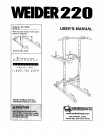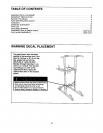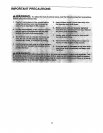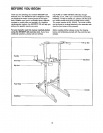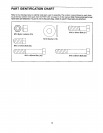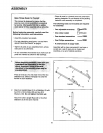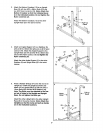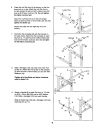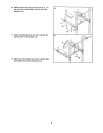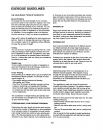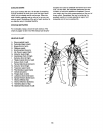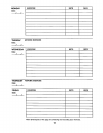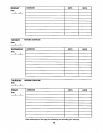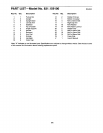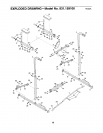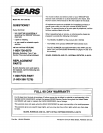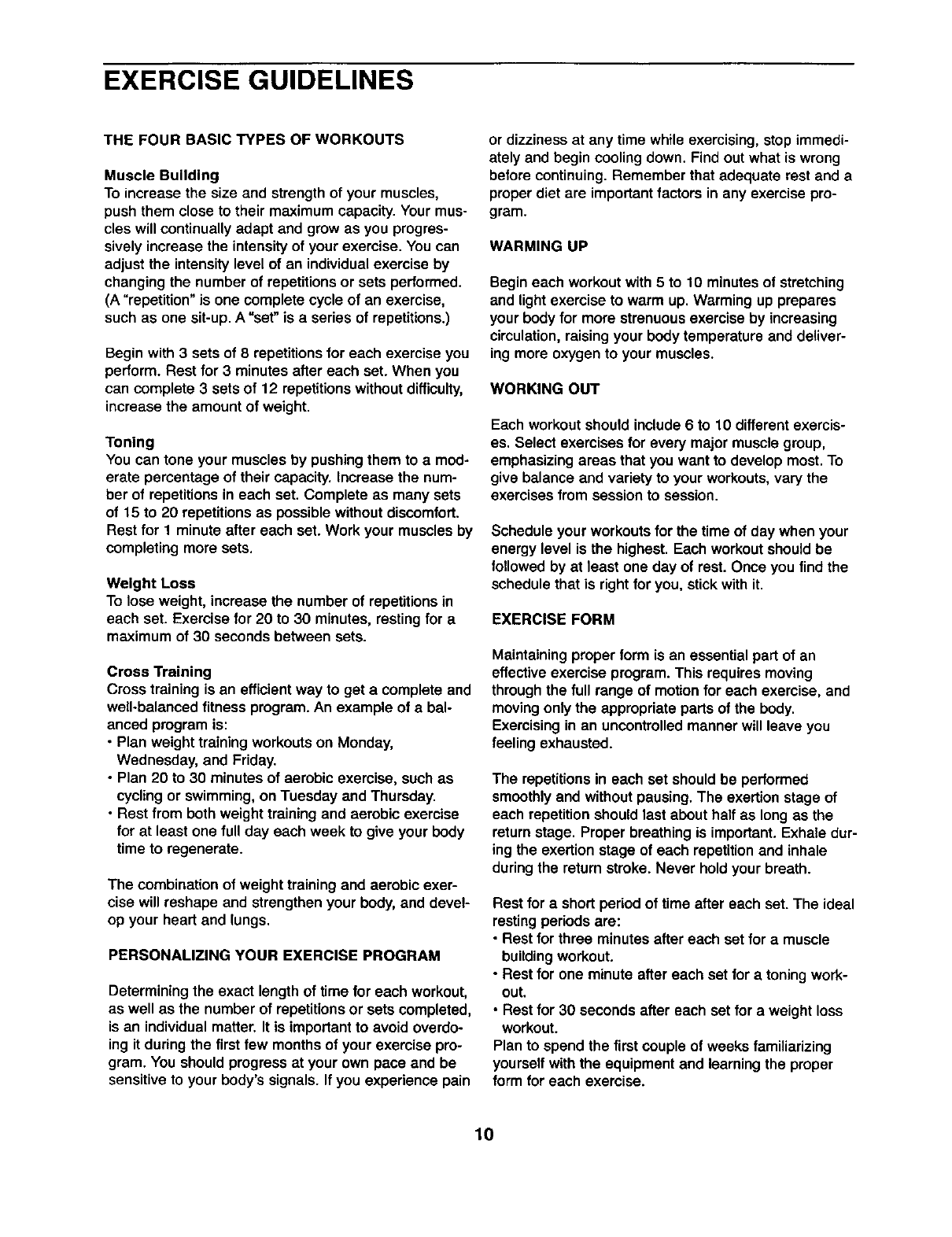
EXERCISE GUIDELINES
THE FOUR BASIC TYPES OF WORKOUTS
Muscle Building
To increase the size and strength of your muscles,
pushthem close to their maximumcapacity.Yourmus-
cleswillcontinuallyadapt and growas you progres-
sively increasethe intensityof yourexercise. Youcan
adjustthe intensitylevel of an individualexercise by
changing the number ofrepetitionsor sets performed.
(A "repetition" is one complete cycleof an exercise,
such as one sit-up. A "set" isa series ofrepetitions.)
Begin with 3 sets of 8 repetitionsfor each exercise you
perform. Rest for 3 minutes after each set. When you
can complete 3 sets of 12 repetitions without difficulty,
increase the amount of weight.
Toning
You can tone your muscles by pushingthem to a mod-
erate percentage of their capacity. Increase the num-
ber of repetitions in each set. Complete as many sets
of 15 to 20 repetitions as possible without discomfort.
Rest for 1 minute after each set. Work your muscles by
completing more sets.
Weight Loss
To lose weight, increase the number of repetitionsin
each set. Exercise for 20 to 30 minutes, restingfor a
maximumof 30 secondsbetween sets.
Cross Training
Cross trainingis an efficientway to get a complete and
weU-balancedfitness program.An example of a bal-
anced program is:
• Plan weight trainingworkoutson Monday,
Wednesday,and Friday.
• Plan 20 to 30 minutesof aerobic exercise, suchas
cyclingor swimming,on Tuesday and Thursday.
• Rest from bothweighttrainingand aerobic exercise
for at least one full day each week togive yourbody
time to regenerate.
The combination of weighttraining and aerobicexer-
cise will reshape and strengthen your body, and devel-
op your heart and lungs.
PERSONALIZING YOUR EXERCISE PROGRAM
Determiningthe exact lengthof time for each workout,
as well as the number of repetitions or sets completed,
is an individual matter. It is important to avoid overdo-
ing it during the first few months of your exercise pro-
gram. You should progressat your own pace and be
sensitive to your body's signals. If you experience pain
or dizziness at any timewhile exercising, stop immedi-
ately and begin cooling down. Find out what is wrong
before continuing. Remember that adequate rest and a
proper diet are important factors in any exercise pro-
gram.
WARMING UP
Begineach workoutwith 5 to 10 minutesof stretching
and light exercise to warm up. Warming up prepares
your body for more strenuous exercise by increasing
circulation, raising your body temperature and deliver-
ing more oxygen to your muscles.
WORKING OUT
Each workoutshouldinclude6 to 10 different exercis-
es. Select exercisesfor every major musclegroup,
emphasizingareas that you want to develop most.To
give balance and varietyto yourworkouts,vary the
exercises from sessiontosession.
Schedule your workoutsfor the time of day when your
energylevel isthe highest.Eachworkoutshouldbe
followed by at least one day of rest. Once you find the
schedule that is rightfor you, stickwith it.
EXERCISE FORM
Maintainingproperform isan essentialpart ofan
effectiveexercise program. This requiresmoving
through the full range of motion for each exercise, and
moving only the appropriate parts of the body.
Exercising in an uncontrolled manner will leave you
feeling exhausted.
The repetitionsin each set should be performed
smoothlyand withoutpausing. The exertionstage of
each repetition shouldlastabout half as long as the
return stage. Proper breathing is important. Exhale dur-
ing the exertion stage of each repetition and inhale
during the return stroke. Never hold your breath.
Rest for a shortperiod of time after each set. The ideal
resting periods are:
• Rest for three minutes after each set for a muscle
building workout.
• Rest for one minute after each set for a toning work-
out.
• Rest for 30 seconds after each set for a weight loss
workout.
Plan to spend the first couple of weeks familiarizing
yourself with the equipment and learning the proper
form for each exercise.
10



